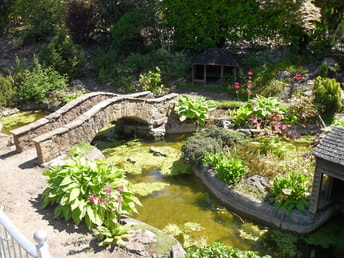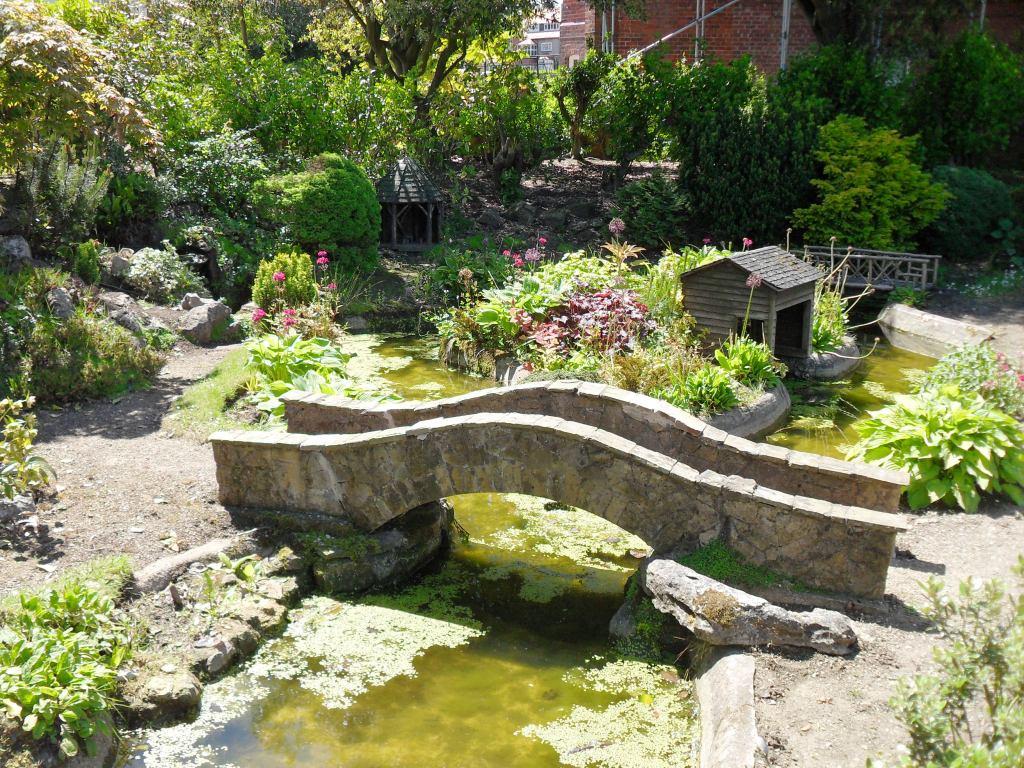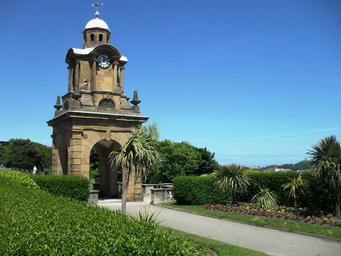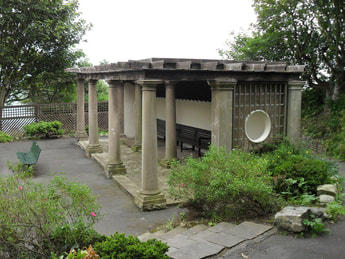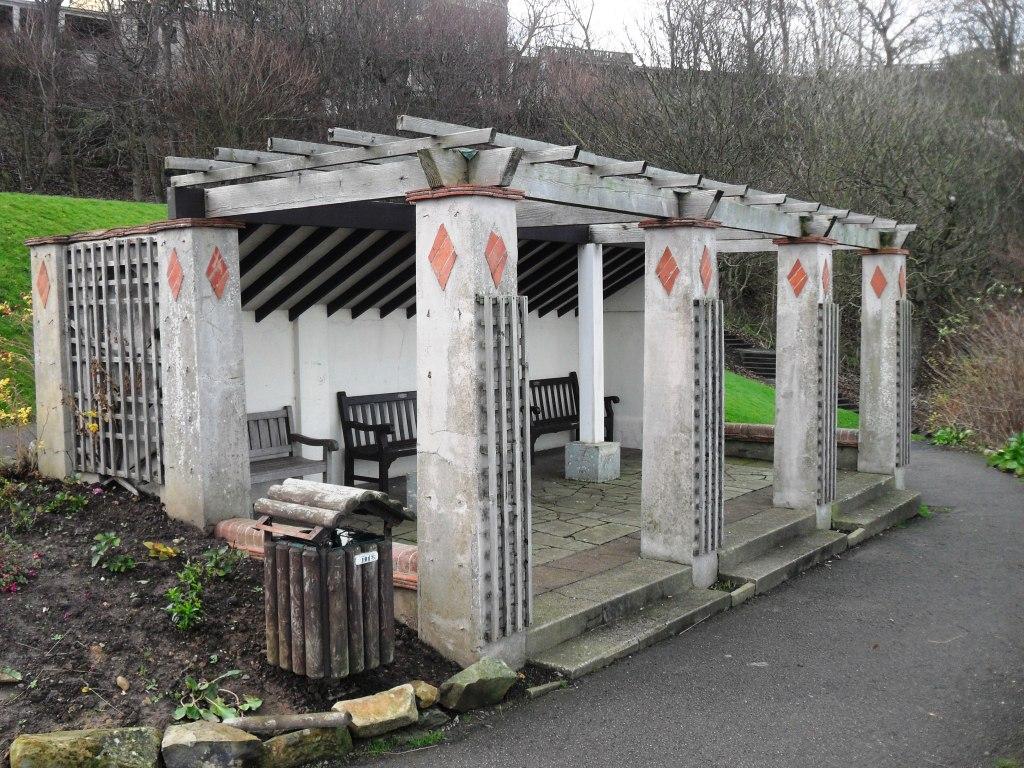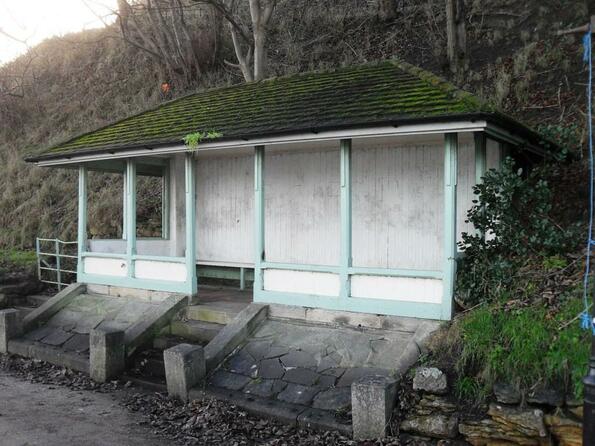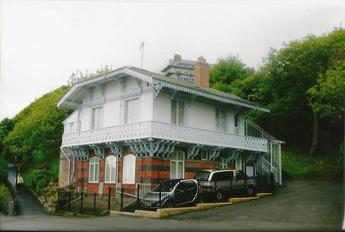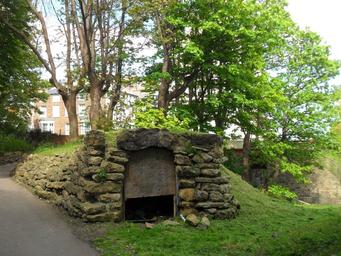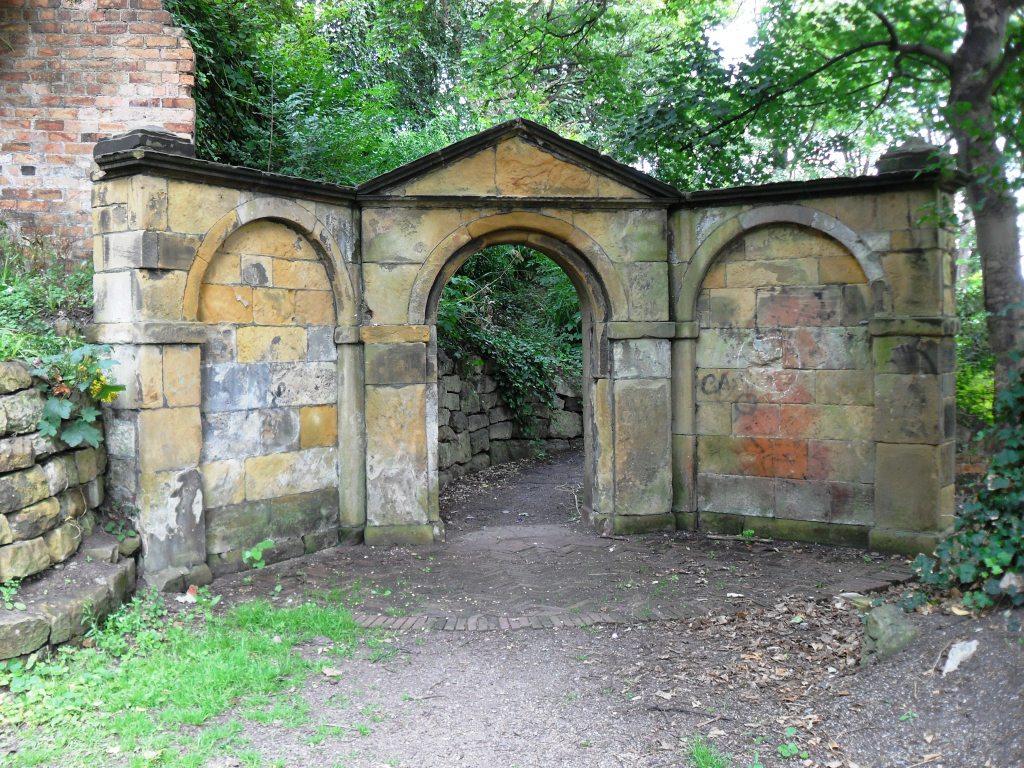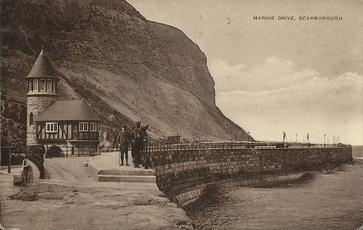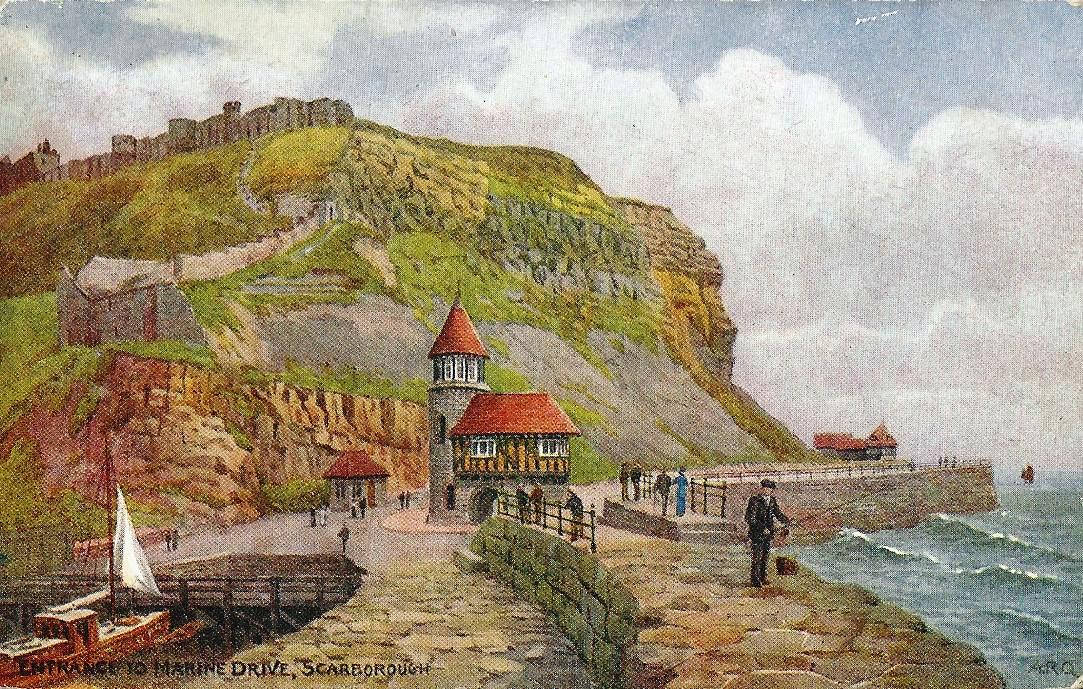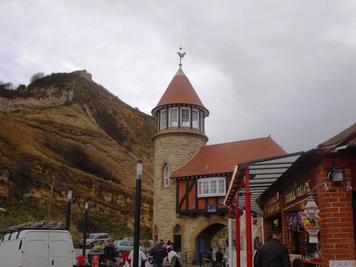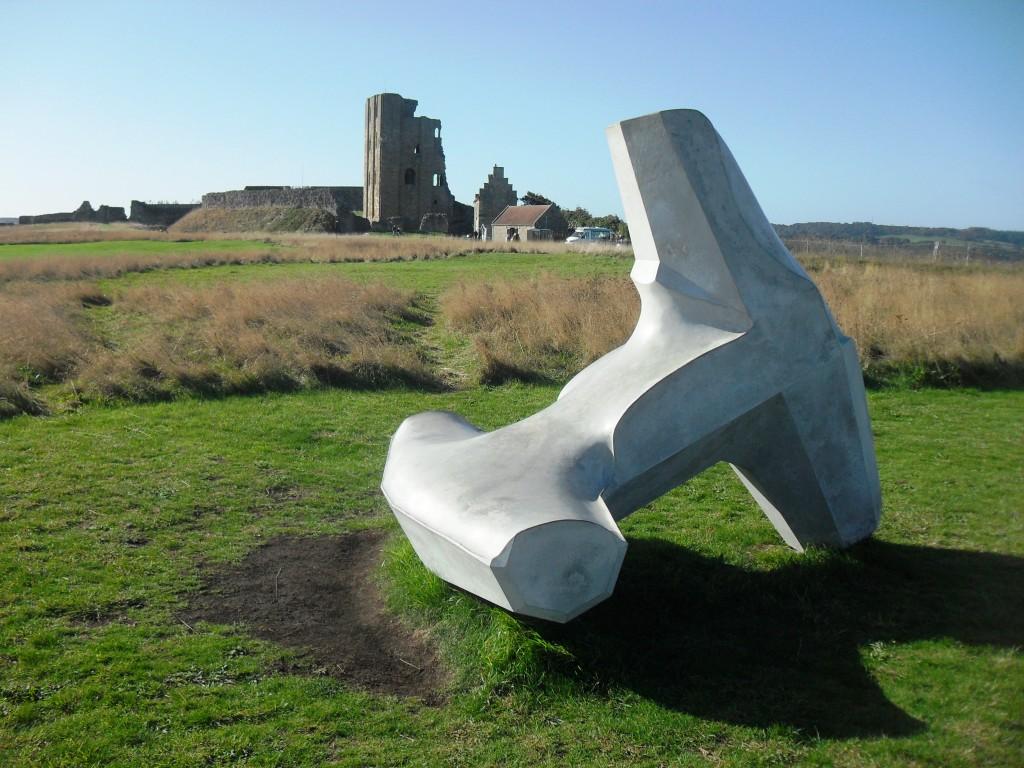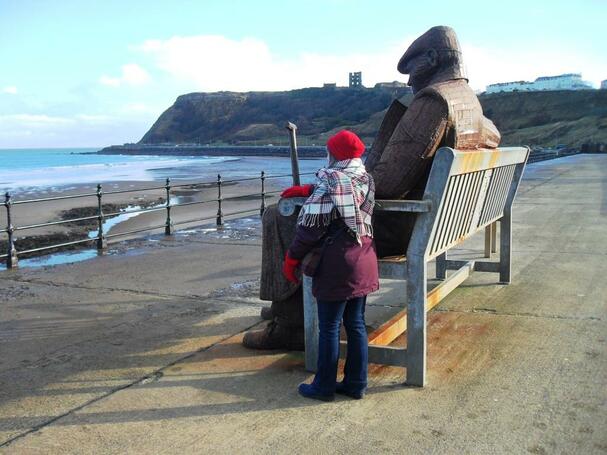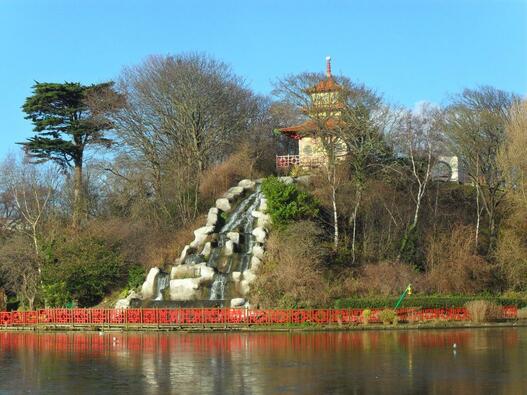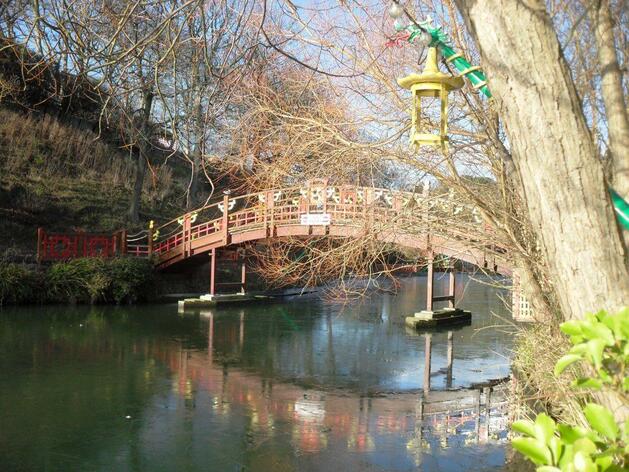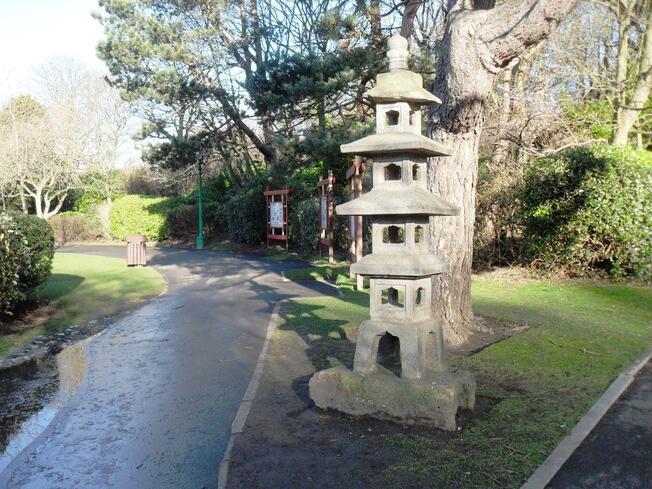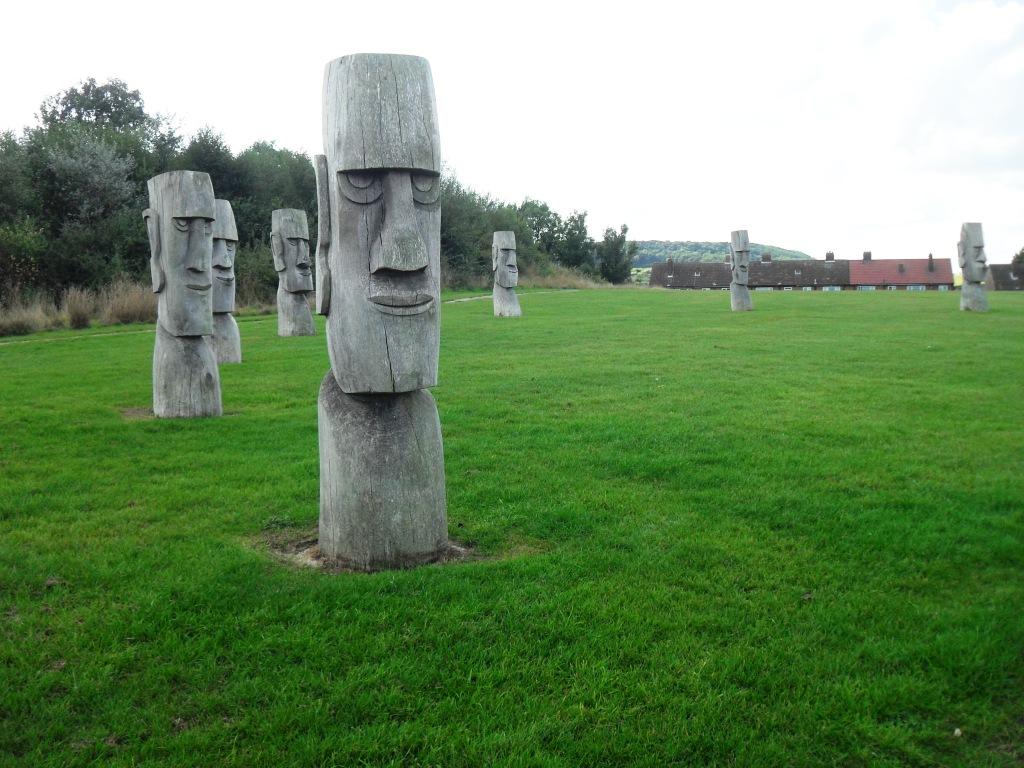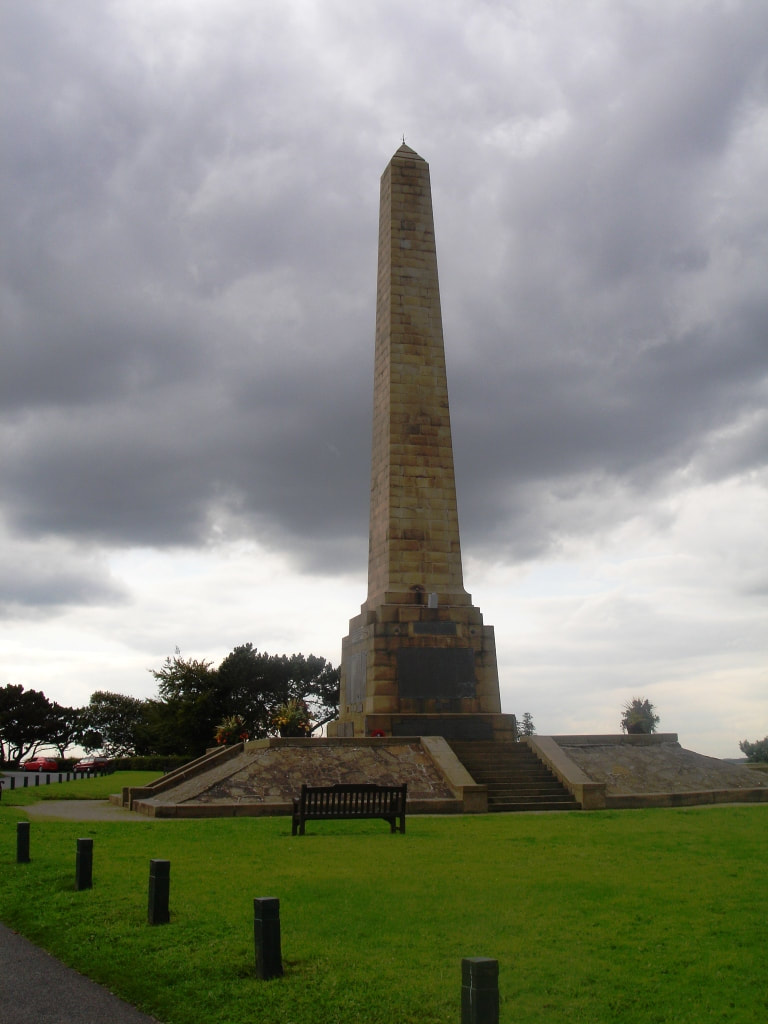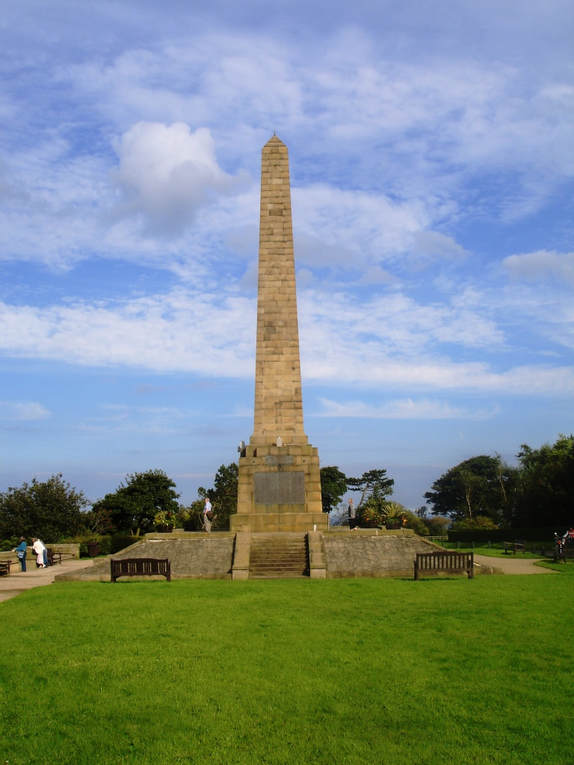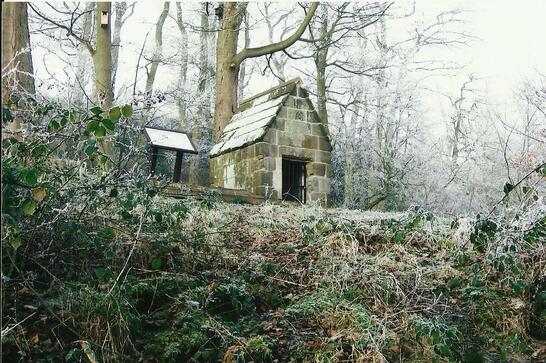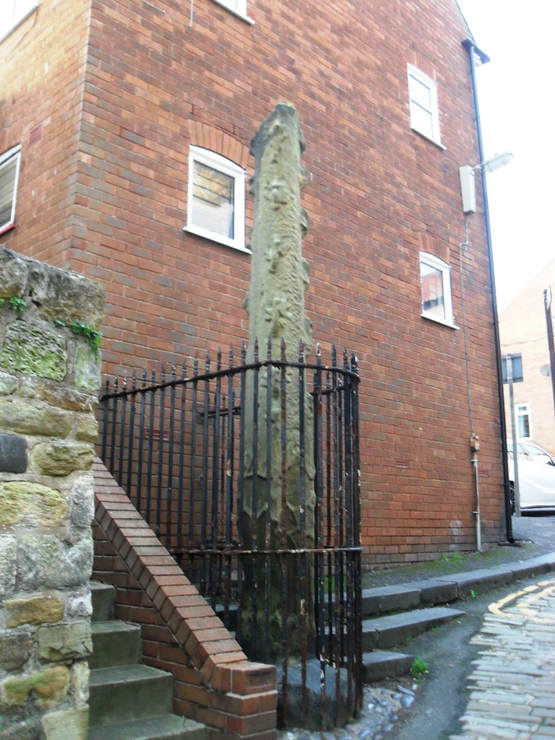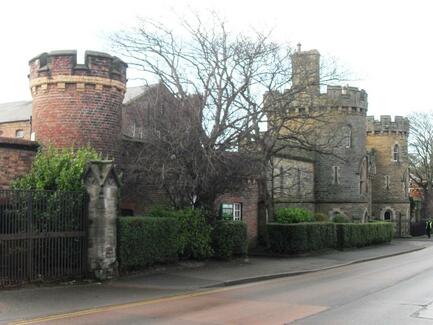SCARBOROUGH, North Riding
Miniature Gardens TA 047 870
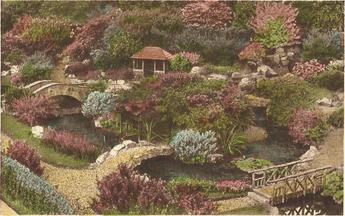
In 1911, Albert Shuttleworth presented to the town the Miniature Gardens, which became known as Shuttleworth Gardens.
Shuttleworth Gardens Pavilion TA 047 871
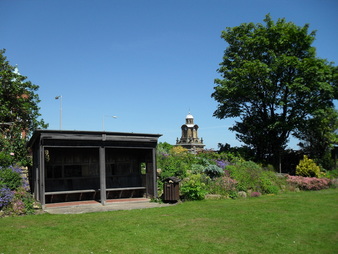
Holbeck Clock Tower TA 046 871
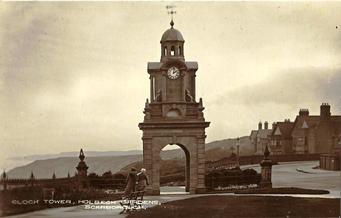
In 1911, Albert Shuttleworth donated the Holbeck Clock Tower to commemorate the coronation of George V.
Holbeck Putting Green Pavilion TA 046 872
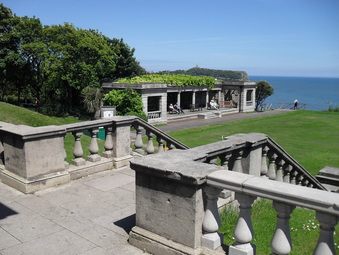
Just below Holbeck Clock Tower a pavilion was erected in 1928 at the Putting Green, which had been made about ten years earlier.
Egyptian Gate Posts TA 045 875
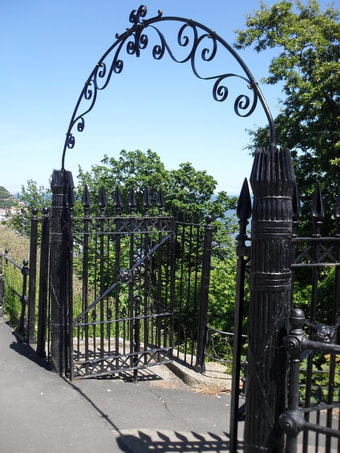
In the mid 19th century, cast iron Egyptian-style gate piers with bound reeds of papyrus were erected as a gateway to South Cliff from the Esplanade.
Italian Garden South Loggia TA 046 873
Clock Cafe Pergola TA 045 875
Tidal Pool/Star Map TA 047 873
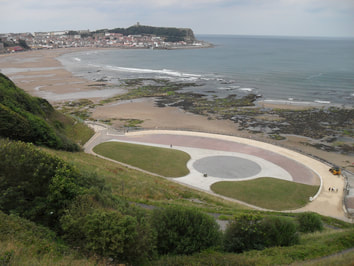
The Tidal Pool at Dickinson's Point has been filled in and has been made into a Star Map.
Spa TA 044 878
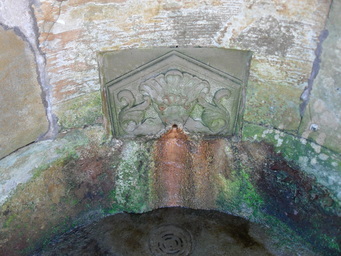
The mineral spring was discovered in 1626.
Spa Arbour TA 043 879
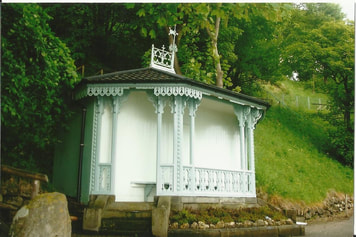
In 1862, a summerhouse, probably designed by Joseph Paxton, was built in the grounds of the Swiss Chalet.
It had been used as an electricity sub-station but has now been restored.
It had been used as an electricity sub-station but has now been restored.
Chalet Arbour TA 043 881
Swiss Chalet TA 043 881
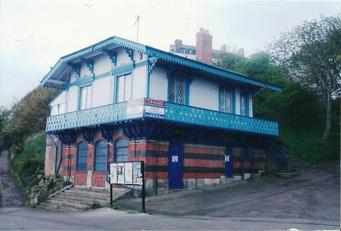
The Swiss Chalet was built in 1860 near the northern end of Spa Gardens and was occupied by the Spa manager. It was acquired by Scarborough Council in the 1950s and was let to the town clerk's secretary who lived there until she died in 2006, aged 93.
It was for sale in 2007 for £250,000 with a 125 year lease and attracted more than 620 potential buyers. It cost between £150,000 and £200,000 to renovate as a holiday home for the staff of Denton and Denton.
It was for sale in 2007 for £250,000 with a 125 year lease and attracted more than 620 potential buyers. It cost between £150,000 and £200,000 to renovate as a holiday home for the staff of Denton and Denton.
The Rotunda TA 043 882
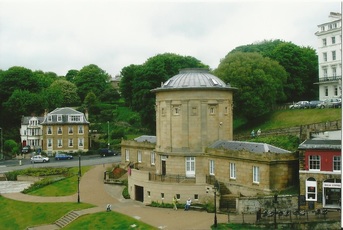
The Rotunda was built for the Scarborough Philosophical Society to be of 'such magnitude and character, as might comprise the whole of their collection in one room, to hold meetings at which scientific communications will be received and to establish a library'.
The design was by William Smith, 'the Father of English Geology', and the architect was Richard Sharp of York.
The foundation stone was laid in 1828 and the museum was opened to the public in the following year.
The design was by William Smith, 'the Father of English Geology', and the architect was Richard Sharp of York.
The foundation stone was laid in 1828 and the museum was opened to the public in the following year.
Footbridge TA 042 882
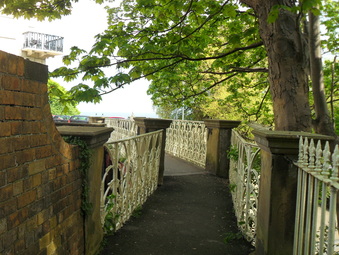
The footbridge was originally private and linked Londesborough Lodge to the town over Vernon Road.
Garden building TA 042 881
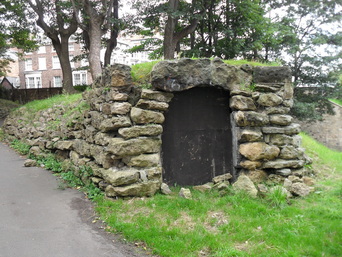
This underground chamber in a garden at The Crescent may be a Grotto.
Strawberry Arch TA 042 881
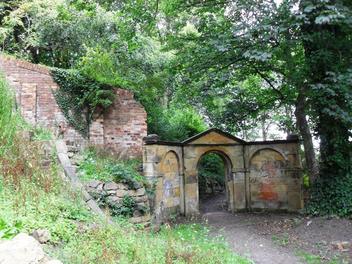
The Strawberry Arch was re-erected in the garden of Crescent House, which belonged to Henry Edward Donner between 1924 and 1942. The arch and wings was the entrance to Strawberry Gardens at Falsgrave.
Bastion TA 042 881
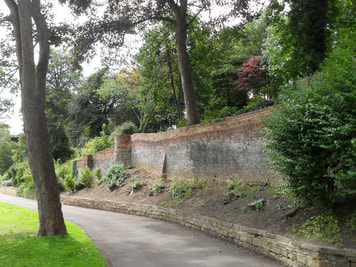
The garden wall near Strawberry Arch has a bastion-like projection.
Wood End Tower TA 041 881
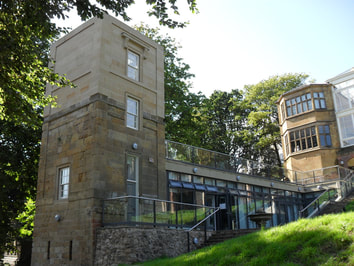
Wood End was built in 1835 and was bought by Lady Louisa Sitwell in 1870. The Sitwell family ladies painted jars in the first floor of the four-storey tower and sold the ornamented jars at charity bazaars.
The tower has recently been restored.
The tower has recently been restored.
Baron Albert's Tower TA 008 876
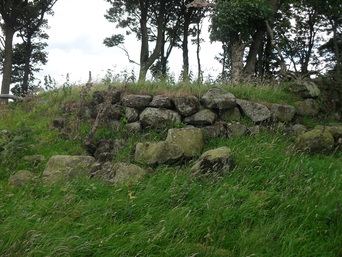
Albert Denison (1805-1860), 1st Baron Londesborough, was the first President of the Archaelogy Association in 1844 and bought Grimston Park in 1851. His interest in archaeology didn't prevent him from building a tower on Seamer Beacon and possibly using stone from a stone circle nearby.
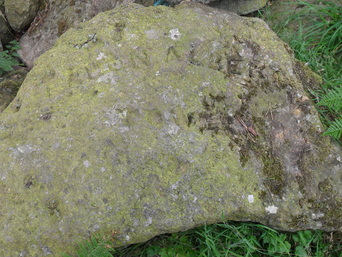
Little remains of the tower but there is a stone with an inscription that reads:
BARON ALBERT'S
TOWER
BARON ALBERT'S
TOWER
Tollhouse TA 051 888
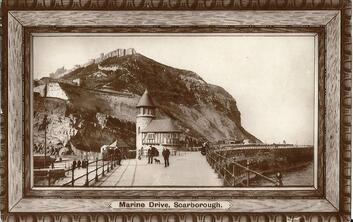
The Tollhouse was built in 1906 at the entrance to the marine drive.
We are only human TA 050 893
Hairy Bob's Cave TA 048 895
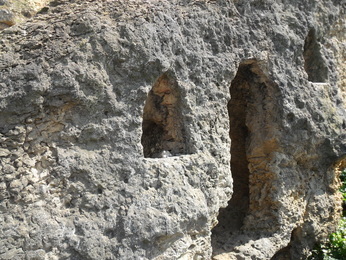
Hairy Bob's Cave is said to have been carved out by navvies during the construction of the Royal Albert Drive, which was completed in 1890.
One story is that 'Hairy Bob' was a man who sold yellowstone for cleaning doorsteps and he lived in a cave to escape from his wife.
It is thought that at one time there was a door and windows at the front of the cave.
One story is that 'Hairy Bob' was a man who sold yellowstone for cleaning doorsteps and he lived in a cave to escape from his wife.
It is thought that at one time there was a door and windows at the front of the cave.
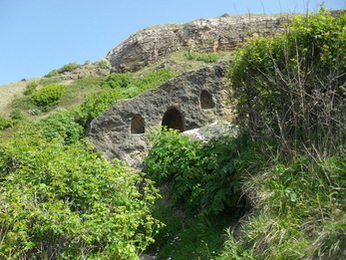
A 13th generation Scarborough man has emailed me with a story that I will quote in full.
''The story was that Hairy Bob was a local drunk, constantly in trouble with the local authorities for outbursts of cursing and drunken ways.
After several nights of drinking, on one dark night, he was arrested and taken to the castle prison, on the promise he could go free the next morning, after sobering up. He wasn't happy and started his usual rants, all the way there. He cursed them that God didn't look kind on their actions, as this was only his way of celebrating finishing his latest job.
''The story was that Hairy Bob was a local drunk, constantly in trouble with the local authorities for outbursts of cursing and drunken ways.
After several nights of drinking, on one dark night, he was arrested and taken to the castle prison, on the promise he could go free the next morning, after sobering up. He wasn't happy and started his usual rants, all the way there. He cursed them that God didn't look kind on their actions, as this was only his way of celebrating finishing his latest job.

Later that night a storm took place and there was a lightening strike to the castle, killing the two guards and causing the cliff to give way. Hairy Bob was the only one unharmed but was found in his prison, at the bottom of the cliff. And there it stays to this day to remind us that it's okay to celebrate after finishing a good job.....''
Thank you Joe for such a good story!
Thank you Joe for such a good story!
Freddie Gilroy TA 040 894
|
The huge steel sculpture of Freddie Gilroy is by Ray Lonsdale from County Durham. At the age of 24, Freddie was one of the first soldiers to relieve the Bergen-Belsen concentration camp in 1945 where they found 60,000 prisoners.
Roy Lonsdale became a friend of Freddie Gilroy, a former miner, who died in 2008. The sculpture had been on temporary display in 2011, and after a campaign to keep it in Scarborough, the £50,000 cost was gifted by Maureen Robinson. See also 'High tide in Short Wellies' at FILEY. |
Pagoda TA 035 895
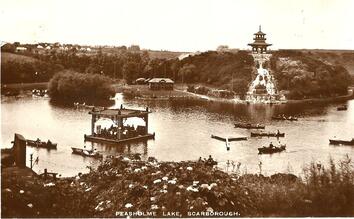
Peasholm Park was designed in the Japanese-style by borough engineer, Harry W. Smith, between 1912 and 1929.
The 30 feet high two-storey Pagoda in the middle of the lake was built in 1929 and designed by George W. Alderson.
On 30th October 1999, the Pagoda was destroyed by arsonists and the burned out shell was demolished.
The 30 feet high two-storey Pagoda in the middle of the lake was built in 1929 and designed by George W. Alderson.
On 30th October 1999, the Pagoda was destroyed by arsonists and the burned out shell was demolished.
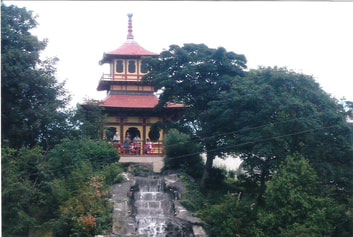
The new Pagoda, that had suffered another arson attack during construction in 2006, was built using fire-retardant wood.
Peasholm Park Bridge TA 035 895
Peasholm Park stone pagoda TA 036 895
Easter Island Heads TA 025 892
Oliver's Mount War Memorial TA 039 869
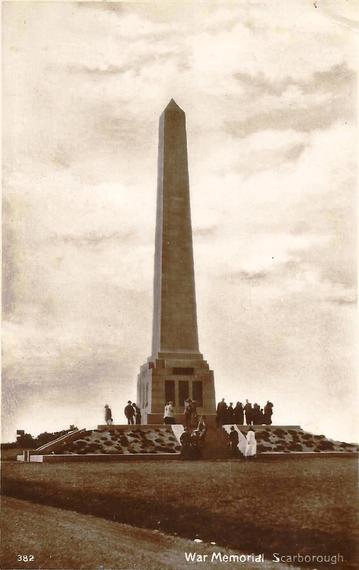
Oliver's Mount is a prominent hill overlooking Scarborough. The 76 feet high obelisk is a war memorial with names of about 750 Scarborough people killed in the First World War.
This postcard was posted in 1927.
This postcard was posted in 1927.
Springwood Wellhead TA 029 876
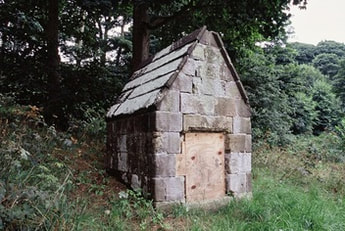
The present well house in Falsgrave Park probably dates from the 18th century but there is evidence of an earlier conduit, which may have been recorded in 1339 as the 'Franciscan Spring'.
Falsgrave Park Stone Circle TA 029 874
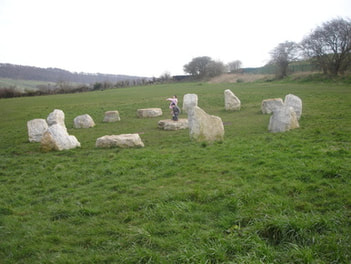
A stone circle has been recently erected at the top of Falsgave Park.
Other recently erected stone circles in Yorkshire include;
BARNINGHAM, North Riding
BROMPTON (near Northallerton), North Riding
Other recently erected stone circles in Yorkshire include;
BARNINGHAM, North Riding
BROMPTON (near Northallerton), North Riding
Butter Cross TA 047 888
|
There were at least five market crosses in the medieval town including the Corn Cross and the Rede Cross.
The badly eroded pillar known as the Butter Cross perhaps replaced an earlier one, and may have been a re-used pinnacle from a church such as the friary churches after they were demolished in 1537, or from the nearby Chapel of the Holy Sepulchre which was demolished in 1561. |
Common Mill TA 036 884
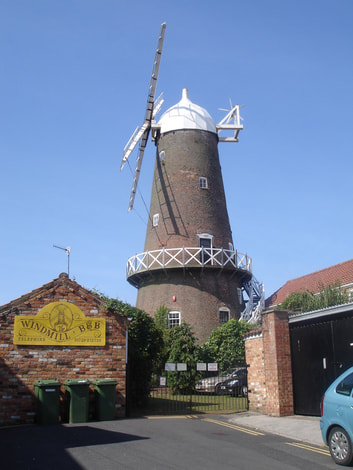
The present windmill may have been built in 1785 to replace an earlier one. It stood in countryside on common land and was known as Common Mill. The last miller was Albert Price Harrison who lived at Calthorpe House.
A windmill on the site was used as an artillery observation post during the Civil War in 1645.
A windmill on the site was used as an artillery observation post during the Civil War in 1645.
Model Prison TA 036 889
|
A model prison was built in 1866 and designed in a Gothick style by William Baldwin Stewart and Alexander Taylor. It cost £12,000, and the 36 cells were initially designed to hold 36 male and 12 female prisoners as well as 4 debtors or juveniles.
There is a circular plaque on the parapet with the seal of the Borough and the inscription: SIGILLVM COMVNE BVRGERSIV. DE SCARDBVRG+ The Prison's Act of 1877 led to the prison being closed in 1878. |
